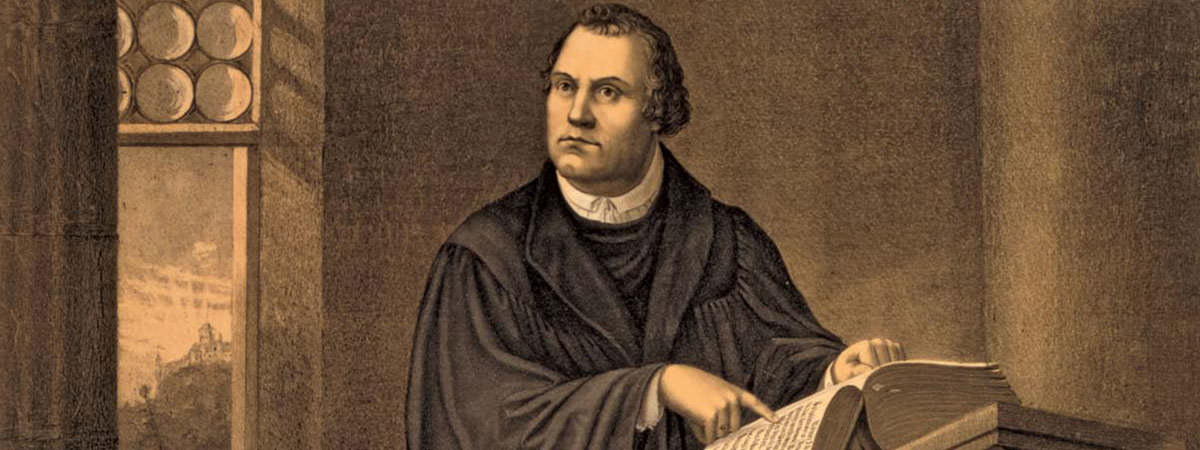Martin Luther (1483 – 1546) was a German priest who is most famous for playing a leading role in the Protestant Reformation, a 16th century religious and political movement in Europe which is regarded as one of the most influential events in the history of Western Christianity. Luther rose as a leader of the Reformation by raising his voice against indulgences, a practice in Roman Catholicism in which the clergy forgave people’s sins in exchange for money. There are numerous interesting incidents in the life of Martin Luther including his life-changing experience in a storm and his being kidnapped to ensure his safety. Moreover, there are striking similarities between Luther and the saint he was named after; and there was an astonishing prophesy by another revolutionary monk which predicted the success of Luther in his endeavor to reform Christianity. Know more through these 10 interesting facts about Martin Luther.
#1 A THUNDERSTORM CHANGED HIS DESTINY
In 1505, Martin Luther was awarded a master’s degree from the University of Erfurt. He was now eligible to pursue one of the three “higher” disciplines: law, medicine or theology. As his father wanted him to be a lawyer, he enrolled to study law. Around this time, an incident occurred that changed the course of Luther’s life. While riding back to university after a trip home, he was caught in a violent thunderstorm near the village of Stotternheim and was almost hit by lightning. The weather terrified him so much that Luther cried out to St. Anne, “Save me, St. Anne, and I’ll become a monk!” When he was able to escape safely, Martin decided to make good on his promise. Many historians, however, believe that this incident was only a catalyst and the idea of becoming a monk had already been formulated in Luther’s mind. Moreover, his friends believed that the recent death of two friends might also have had some part to play in his becoming a monk.
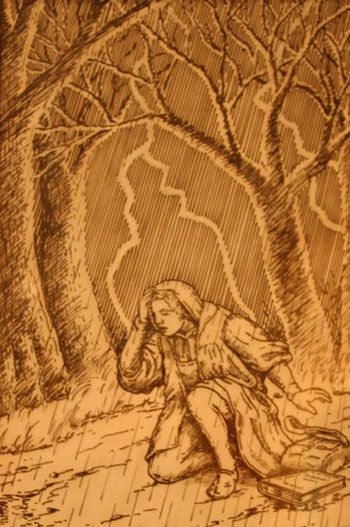
#2 HE PROBABLY DIDN’T NAIL THE NINETY-FIVE THESES
In 1516, Albrecht von Brandenburg, Archbishop of Mainz, who was deeply in debt, got permission from Pope Leo X to conduct the sale of a special plenary indulgence, which would grant remission of the temporal punishment of sin. In response to this, on 31st October 1517, Martin Luther wrote a letter to Albert of Brandenburg in which he enclosed a copy of his “Disputation of Martin Luther on the Power and Efficacy of Indulgences”, which later became famous as the Ninety-five Theses. According to popular legend, Luther nailed a copy of his 95 Theses to the door of the Wittenberg Castle church. However, many scholars now believe that he didn’t nail the theses but rather hung it as was the custom to ensue academic discussion on your work. Whatever might be the truth, October 31, 1517, the day he did this act, is regarded as the start of the Protestant Reformation with October 31 being commemorated annually as Reformation Day.
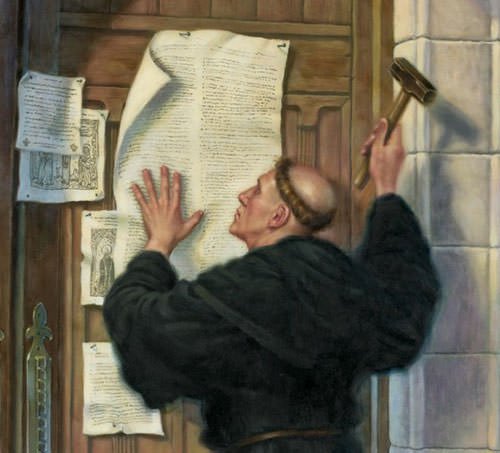
#3 THE PRINTING PRESS PLAYED A KEY ROLE IN SPREADING HIS TEACHINGS
The teachings of Martin Luther spread like wildfire through Germany and abroad as they appealed to the common people who were fed up with the corrupt practices of the Catholic church. However, this was primarily made possible due to the invention of the Printing Press by Johannes Gutenberg in 1440. With the printing press, Luther began to print pamphlets that took just one day to print and ranged from 16 to 18 pages. His first German pamphlet was printed in 1518 and was known as the “Sermon on Indulgences and Grace”. Due to the speed of the printing press, at least 14000 copies of the sermon were printed in one year. This allowed Luther to spread his message far and wide. In fact, within the first 10 years of the Reformation movement, around 6 million pamphlets had been printed. Astonishingly, as many as 25% of them were written by Martin Luther.
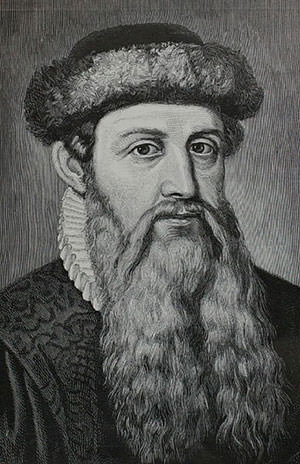
#4 LUTHER WAS KIDNAPPED FOR HIS OWN PROTECTION
On June 15, 1520, Pope Leo X issued a public decree that warned Martin Luther that he risked excommunication unless he recanted 41 sentences drawn from his writings within 60 days. Luther, instead publicly set fire to the decree on December 10. Luther was thus excommunicated by the Pope on January 3, 1521. Then, on April 18, he appeared at a meeting of the Diet (assembly) of the Holy Roman Empire held at Worms, Germany. At the Diet of Worms, Luther was again asked to recant his writings. He, however, stressed that he would only be swayed by reason or if it was written otherwise in the holy scriptures. He concluded his testimony with the defiant statement: “Here I stand. God help me. I can do no other.” Given the tense situation, Luther’s protector, Frederick the Wise, realized that he needed to be hidden until the tensions with the Church subsided. He, therefore, ordered a group of knights to “kidnap” Luther, who was then taken to a castle in Eisenach where he stayed hidden for 10 months.
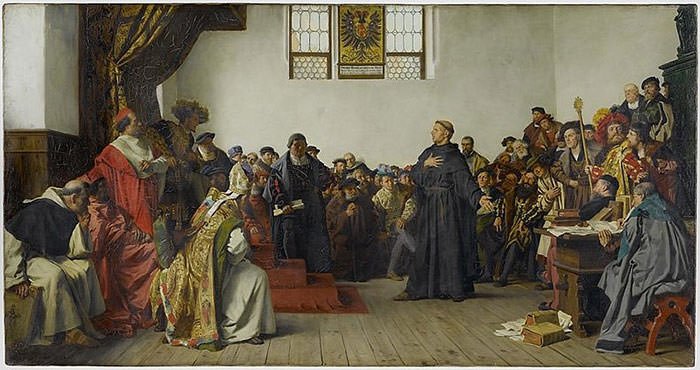
#5 HE HAD SEVERAL PREDECESSORS WHO REBELLED AGAINST THE CATHOLIC CHURCH
Attempts to suppress Luther and his followers by the Roman Catholic rulers proved unsuccessful and, within two years, it became evident that the movement for reform was very strong. Luther returned to Wittenberg Castle Church, in Eisenach, in May 1522. By this time, the Reformation had become more political in nature and other reformers; including Thomas Müntzer, Huldrych Zwingli and Martin Bucer; had gathered mass followings. Due to this, post-1522, Luther became a somewhat less influential leader of the movement.
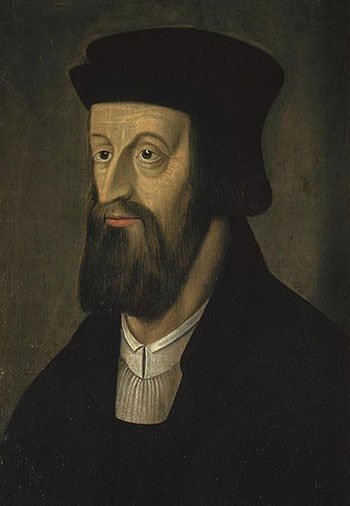
Also, it must be mentioned that Luther had several predecessors who also criticized the corrupt practices of Roman Catholicism in unequivocal terms. John Wycliffe and Jan Hus were the most famous of these critics. Wycliffe was an English intellectual, scholar, and theologian. He criticized the Church’s practice of indulgences as well as the clergy’s ostentatious ceremonies and lavish lifestyles. Jan Hus was a Czech priest who also criticized the teachings of the church while delivering a sermon at his own church. He was executed in 1415 for his rebellion. His work, however, did lead to a movement called the Hussites, a pre-Protestant Christian movement against the Roman Catholic Church.
#6 HIS MARRIAGE TO AN EX-NUN CREATED A HUGE SCANDAL
Katharina von Bora spent her early life in convent schools followed by a life as a nun. However, after several years of religious life, she grew dissatisfied with her life in the convent and instead grew interested in the Reformation movement. She conspired with other interested nuns and wrote to Martin asking for assistance. On Easter Eve of 1523, Martin sent Leonhard Koppe, a merchant who regularly delivered herring to the convent, to help the nuns escape. They did so by hiding among fish barrels in his covered wagon.
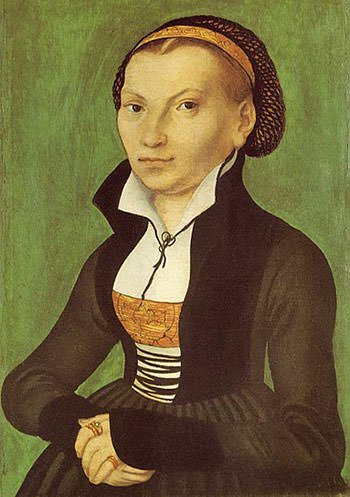
Within two years, Martin arranged homes, marriages or employment for all the escaped nuns except Katharina, who insisted on marrying Martin himself. On June 13, 1525, Martin Luther married Katharina von Bora. This caused a huge scandal among Catholics and at the same time, enabled other clergy in the Lutheran churches to get married. The couple went on to have six children. Katharina is considered an influential member of the Protestant movement as she helped define Protestant family life and set the tone for clergy marriages.
#7 MARTIN LUTHER WAS DISTURBINGLY ANTI-SEMITIC
One of the more disturbing aspects of the teachings of Martin Luther is his deeply Anti-Semitic views. In his earlier days, he had a gentler stance and even criticized the Catholic Church for their harsh treatment of Jews. Over time, however, he became much more aggressive and harsh towards Jews. He claimed Judaism was a false religion and he is also known to have said, “a Jewish heart is as hard as a stick, a stone, as iron, as a devil.” His violent fantasies and abusive rhetoric got more virulent as he became older. Luther’s major works on the Jews included Von den Juden und Ihren Lügen (On the Jews and Their Lies), and Vom Schem Hamphoras und vom Geschlecht Christi (On the Holy Name and the Lineage of Christ). Both these works were published in 1543, just three years before he died. In these works, Luther argued that Jews were no longer the chosen ones but were the “devil’s people”. Moreover, he even used violent, abusive language to refer to Jews in these texts.
#8 HIS LIFE HAS STRIKING SIMILARITIES TO THE SAINT HE WAS NAMED AFTER
Saint Martin of Tours was a soldier in the Roman army in the 4th century who refused to kill people because he said it went against being a Christian. He did so just before a battle in the Gallic provinces at Borbetomagus (now Worms, Germany). He was consequently charged with cowardice and jailed. Eventually, he was released and chose to become a monk. Saint Martin has become one of the most famous Christian saints in Western tradition. Martin Luther was named after Saint Martin as he was baptized on St. Martin’s Day (November 11). The similarities between Martin of Tours and Saint Martin are striking as both left another path to become monks. Moreover, Martin of Tours staged his protest in the city of Worms, the same place where Luther’s famous Diet of Worms took place.
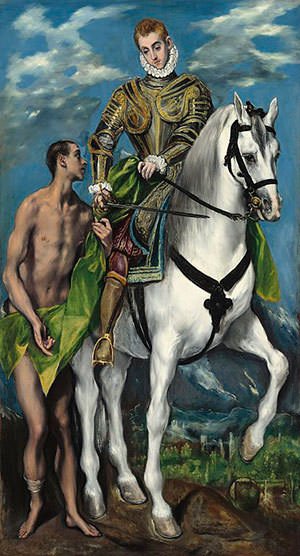
#9 HIS NAMESAKE BECAME ONE OF THE GREATEST 20TH CENTURY LEADERS
In 1934, Michael J. King, a pastor from Atlanta in the American state of Georgia, went to Germany. While visiting the sites related to Martin Luther, he was so inspired by Luther and the story of the Reformation that he decided to change his name to Martin Luther King. Consequently, he also changed the name of his 5 year old son to Martin Luther King Junior. As we all know, Martin Luther King Jr. went on to become one of the most famous leaders of the twentieth century. He fought against discrimination of African Americans in the United States and was the most prominent leader of the American Civil Rights Movement. He organized and led many marches for the voting right of blacks, desegregation, labor rights and other basic civil rights. His efforts bore fruit when the Civil Rights Act of 1964 and the 1965 Voting Rights Act were passed and most of these rights were enacted into law. On October 14, 1964, King received the Nobel Peace Prize for leading non-violent resistance to racial prejudice in the U.S. At the age of thirty-five, he was the youngest recipient of the award at the time.
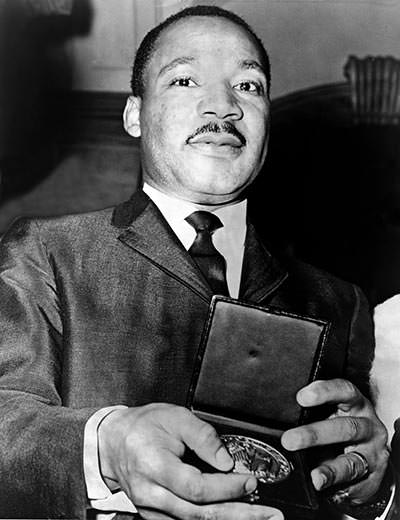
#10 A PROPHESY MADE SWAN A SYMBOL CLOSELY ASSOCIATED WITH LUTHER
Jan Hus, whose name literally means “Goose” in the Bohemian language, was a Czech priest who was a seminal figure in the Bohemian Reformation, a movement against the Catholic church which preceded the Protestant Reformation. For speaking against the church, Hus was excommunicated and burned at the stake on July 6, 1415. Just prior to being burned, he said: “You are now going to burn a goose, but in a century you will have a swan which you can neither roast nor boil”. Almost exactly a century later (102 years), on October 31, 1517, Martin Luther posted his 95 Theses on the door of the Castle Church in Wittenberg; initiating the Protestant Reformation. Thus, many believe that the prophesy of Jan Hus came true. Moreover, Martin Luther was strongly influenced by the teachings of Hus and he referred to himself as the swan of which Hus prophesied. At Luther’s funeral in 1546, this prophesy was mentioned in the sermon. Also, due to the prophesy of Jan Hus, the swan became a popular symbol associated with Martin Luther and thus it may be frequently seen in Lutheran art.

